Our staff have developed a free self-directed online course made up of a series of short taster videos and related activities, for students interested in learning foreign languages.
The Language and Culture Show and Tell is a self-directed series made up of short videos and related activities showcasing some of the languages we teach at the School of European Languages, Culture and Society (SELCS). Each session is designed using an item from the UCL Art Collections as a starting point.
The videos, some of which were initially developed for our Y12 Languages and Cultures Residential Summer School can be used by individuals and/or schools. While each one showcases a specific aspect or theme, the sessions are connected with each other in different ways, offering a range of different pathways.
Once you have engaged with our materials, we would also encourage you to fill in a short feedback form. This information is anonymous and will be used solely for the scope of developing further resources.
Please note that in 2023 the materials developed as part of this series will be at the centre of a showcase open to the public Wed-Fri 1-5pm at UCL Art Museum: Not Just Words: Learning Languages Through Art and Objects (11 January - 9 June 2023).
The showcase has now been extended to 7th June 2024 to accommodate the ever-growing taster library, for more information on events and opening times please visit: Not Just Words: Learning Languages Through Art and Objects (11th Jan 2023 - 7th Jun 2024)
- About this series
In this video language tutors at UCL share five simple steps they followed to create the language tasters featured in this showcase. Be inspired to join the series and make your own. If you are interested in teaching with museum collections, please contact museums@ucl.ac.uk. If you are interested in creating a video for this series, please contact elettra.carbone@ucl.ac.uk
YouTube Widget Placeholderhttps://youtu.be/nDTxnaPTHvU
- Arabic
Taking The Flight into Egypt as a point of departure, this language taster outlines features of the Arabic language. It charts the socio-historical role of ‘flight’ and ‘emigration’ in Arabic culture and the continued relevance of these themes in the modern context of the Arab world. Additionally, this taster examines the transmission of knowledge from east to west, providing insight into the richness of the Arabic language, as well as a counter-narrative to how the Arab world is often portrayed.
YouTube Widget Placeholderhttps://youtu.be/WPqzeHu2unQ 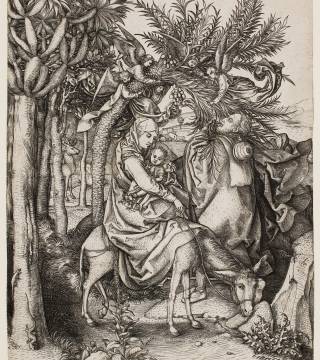
Martin Schongauer
The Flight into Egypt
c. 1470-4
Engraving on paper
LDUCS-1959
- Danish
This session gives a brief introduction to Danish and its place within the grid of European languages. The focus is on the ways in which Danish has imported words from and exported words to other languages, and how this reflects a history of wider cultural exchange. Using a snapshot of Danish society and culture in the late seventeenth century with views back and forward in time, we will look at how language and culture coexist and develop alongside each other.
YouTube Widget Placeholderhttps://www.youtube.com/watch?v=pvWN2oo1qls 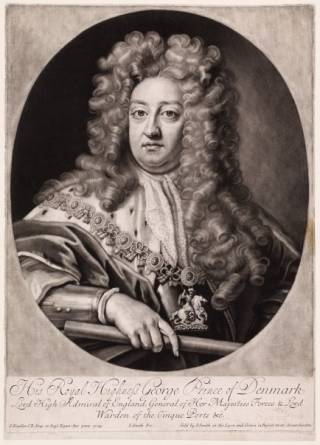
Portrait of George, Prince of Denmark, by John Smith, after Godfrey Kneller, mezzotint on paper, circa 1704-08 (UCL Art Museum, LDUCS-2041).
- Dutch
In this session you will learn your first Dutch words and phrases as you are introduced to the life and work of Flemish artist Sir Anthony Van Dijck who was quite a hit at the court of Charles I in England. He was responsible for boosting the king’s image not just at home but across Europe. You will gain an insight into how language and cultural exchanges are deeply related and see the many similarities between English and Dutch.
YouTube Widget Placeholderhttps://www.youtube.com/watch?v=KJ9RpOvzxmQ 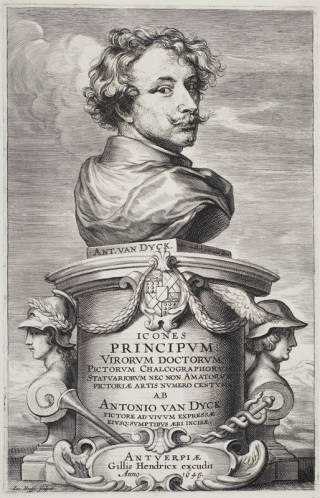
Self-Portrait of Anthony van Dyck, from Iconography, by Anthony van Dyck and Jacobus Neeffs, etching and engraving on paper, 1630-41 (UCL Art Museum, LDUCS-488).
- Finnish
This session introduces you to the Finnish landscape and a feature of Finnish grammar, local cases. You will learn several Finnish words, the difference between internal and external local cases, and how vowel harmony works.
YouTube Widget Placeholderhttps://www.youtube.com/watch?v=Nm4TcXcCMpo 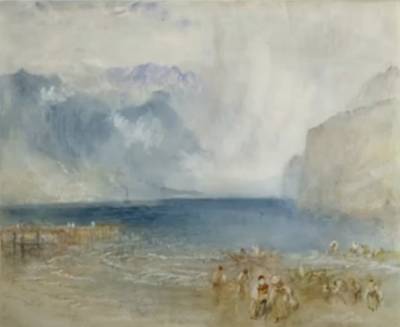 JMW Turner, The First Steamer on the Lake of Lucerne, circa 1841 (UCL Art Museum, LDUCS-2176).
JMW Turner, The First Steamer on the Lake of Lucerne, circa 1841 (UCL Art Museum, LDUCS-2176).- French
Dr Thibaut Raboin and Marie Fournier
In this session, we will look at a British caricature by Issac Cruikshank on the subject of the French Revolution. What is caricature and what is its aim? After placing Cruiskshank in his historical context, we will examine the picture and pick out details that help us understand the British criticisms of the French Revolution. Finally, we will talk about French pronunciation, paying particular attention to silent letters.
YouTube Widget Placeholderhttps://www.youtube.com/watch?v=cJ0q1fFZk1I 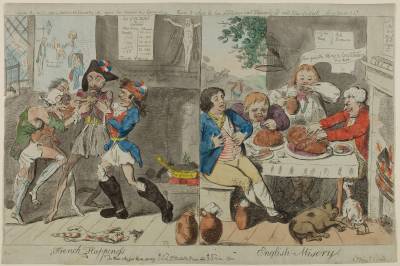 Isaac Crukshank, French Happiness, English Misery, 1793, etching, hand coloured (UCL Art Museum, LDUCS-10264).
Isaac Crukshank, French Happiness, English Misery, 1793, etching, hand coloured (UCL Art Museum, LDUCS-10264).- German
In this taster, you will learn about how Germans tried to define their nationhood before there was a German nation state. Using a print of the river Rhine from UCL Art Museum, we will see how landscape was one way to form national identity. Additionally, we will look at a few German words connected to the print, and learn how we can ‘glue’ them together to form new words, which are called compound nouns.
YouTube Widget Placeholderhttps://www.youtube.com/watch?v=UnEqTblOheY Lahneck, Stolzenfels und Niederlahnstein (River landscape, with view of Lahneck Castle, Stolzenfels Castle and Niederlanstein along the Rhine, near Koblenz in Rhineland-Palatinate, Germany), by Joseph Maximillian Kolb, after Ludwig Rohbock, engraving on paper, circa 1863 (UCL Art Museum, LDUCS-3546).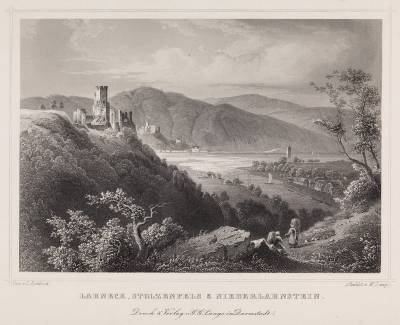
- Icelandic
Dr Helga Hlaðgerður Lúthersdóttir
This session will be centred on a birds-eye map of London from 1572. I will be juxtaposing the image with maps of Iceland from similar time period, while exploring how we find terms in our own languages (Icelandic vs English) to describe something entirely foreign to us, as well as imagining the experience of seeing for the first time the actual meaning of a word you’ve known your entire life. All this before entering the London and Reykjavik of today.
YouTube Widget Placeholderhttps://www.youtube.com/watch?v=g6hsFmogKKI Plan of London, from Civitates Orbis Terrarum (volume 1, plate 1), by Franz Hogenburg, published by Georg Braun, etching and engraving with hand-colouring on paper, 1572 (UCL Art Museum, LDUCS-4787).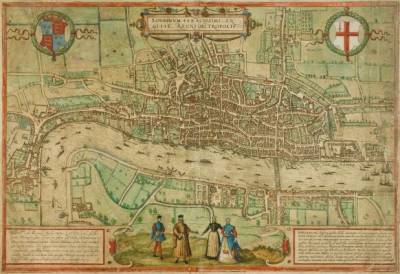
- Italian
During this session, I'll introduce you to a beautiful view of Rome etched in 1765 by Giuseppe Vasi (1710-1782). I will tell you something about his work and the way Rome has changed between the eighteenth and the twenty-first century. We will take a look at images of ancient and modern Rome and consider the city's role within the itinerary of the Grand Tour, the formation journey that many young noblemen – especially British – undertook in their early 20s to complete their education. At the end of the presentation, I'd like you to imagine yourself as being a traveller on a Grand Tour who needs to ask for some directions in Rome. How would you do that? We'll discover it together!
YouTube Widget Placeholderhttps://www.youtube.com/watch?v=jQss7vLbqAU A Prospect of Rome from Monte Gianicolo (1765) by Giuseppe Vasi (1710-1782) (UCL Art Museum LDUCS-2476).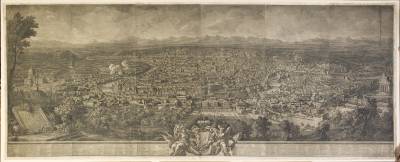
- Mandarin
The aim of this session is to introduce you to some aspects of Chinese language and/or culture. I will take my starting point from a simple greeting, then provide some cultural and historical background to some traditional Chinese ways of doing things. I will cross-reference other cultures wherever relevant. After that, I will take you through some Chinese characters and the reasonings behind their formation. I hope you will enjoy the show!
YouTube Widget Placeholderhttps://www.youtube.com/watch?v=QGM__kOEe6M 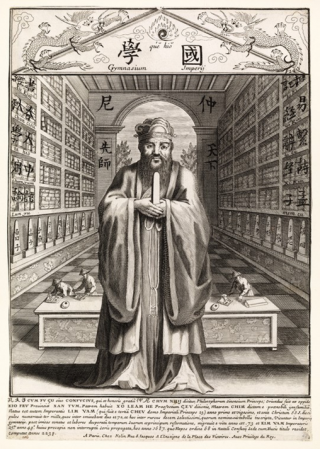
Confucius (Portrait of Confucius, Chinese Philosopher, wearing the traditional costume of a scholar and carrying a symbol of administrative office, with library behind; an illustration for Philippe Couplet, Confucius Sinarum Philosophus, Paris, 1687), by Anonymous, French, engraving on paper, circa 1687. (UCL Art Museum, LDUCS-31).
- Norwegian
In this session we explore the origins of the tradition of British travels to Norway taking as a starting point a Norwegian landscape illustration from 1827, View across the Fiord from Herrinsholmen. Engraved by John Linnell the Elder (1792-1882) after a drawing by the British painter Edward Price (1800-1885), this illustration is one of seven which were supposed to be used in Price's travel book about his journey to Norway called Norway. Views of Wild Scenery (1834). We will explore the story of the unused prints and of Price's journey to Norway in 1826 while learning about the grammatical gender of Norwegian nouns. Once you have watched the video, the worksheet will help you to consolidate some of the cultural and linguistic topics presented there. What’s the Grand Tour? And what does grammatical gender mean? Can you guess the meaning of more Norwegian words? Have fun!
YouTube Widget Placeholderhttps://www.youtube.com/watch?v=71ryi7zCTxY John Linnell (1792-1882), after Edward Price (active c.1823-1854), View Across the Fiord from Herrinsholmen, circa 1826-27 from series Seven Views in Norway, etching on paper (UCL Art Museum LDUCS-1456).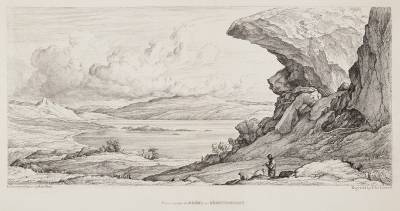
- Portuguese
In this session, students will explore the lovely Portuguese city of Sintra, with its fairy-tale scenery and monuments and hear about the impact it has had on some of its famous visitors, including writers, poets, musicians and artists. One artist who split his time between London and Sintra was creative printmaker and UCL Professor Barto dos Santos, who taught at the Slade. We will look at one of his etchings to learn some nouns we can use to describe people in Portuguese.
YouTube Widget Placeholderhttps://www.youtube.com/watch?v=f58d9M1XYdY Slade Printmaking Christmas Lunch Invitation, by Bartolomeu dos Santos, etching on paper, 1995 (UCL Art Museum, LDUCS-8834) (c) the Artist’s Estate.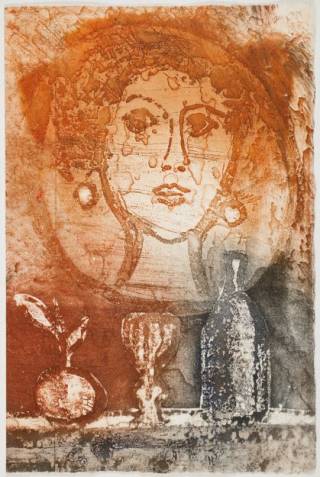
- Spanish
Taking as a starting point the Panorama of Madrid with plan of Barcelona and map of Cadiz by Georg Paul Busch from the eighteenth century, we will explore the the diversity of Spain’s regions, describe cities and learn to talk about the weather.
YouTube Widget Placeholderhttps://www.youtube.com/watch?v=1jhwtzE5pm0 Busch, Georg Paul. Panorama of Madrid with plan of Barcelona and map of Cadiz, 18th century, engraving on paper (UCL Art Museum, LDUCS-3561).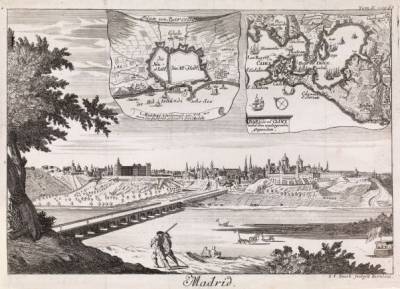
- Swedish
Swedes are considered – by themselves and sometimes by others – to be complete nature-lovers. Today we will look at how nature, geography and history have played significant roles in shaping Swedish trends, behaviour and values. One of the people who set all this off was eighteenth-century scientist and botanist Carl Linnaeus. We will try and spot how his legacies of his promoting Swedish nature can be found in modern-day Sweden – for example in people’s names and on their money!
YouTube Widget Placeholderhttps://www.youtube.com/watch?v=8TjxoJN-qCI 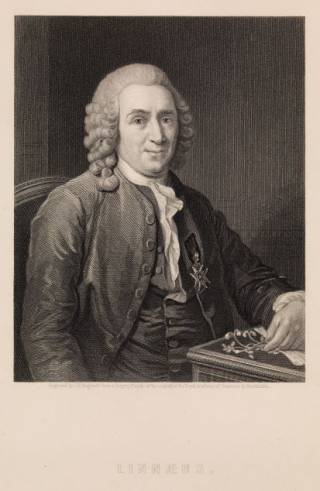
Portrait of Charles Linnaeus, by Charles Edward Wagstaff, after Lorens Pasch, etching and engraving, circa 1810-40 (UCL Art Museum, LDUCS-4533).
- Hieroglyphs or What is (a) language?
This video takes inspiration from a series of plaster casts used by Margaret Murray in her teaching of hieroglyphs. It begins to explain why language is not just words. As linguist Carol Genetti has argued, language is ‘the principal means by which societies are constructed and cultures are developed.’ It is an essential component of our lives and humankind and is both systematic and creative. The video also celebrates UCL’s pioneering work in language teaching and ‘object-based learning’.
If you want to learn more about hieroglyphs, please visit the Petrie Museum of Egyptian and Sudanese Archaeology.
YouTube Widget Placeholderhttps://youtu.be/iynQyBhrUho - Hebrew
During this session you will be shown several images that are found in a medieval manuscript of the Hebrew Bible that is held in UCL’s Special Collections. You will learn how the scribe of this manuscript added playful touches to his work. And with the help of this manuscript, you will learn what the Hebrew alphabet looks like and how it was used in Hebrew wordplay. You will even learn an ancient Hebrew cipher, the so-called atbash code, which is based on the Hebrew alphabet. You will be given an example of this atbash code, and by the end of this video you will have become a codebreaker yourself!
YouTube Widget Placeholderhttps://www.youtube.com/watch?v=n1TqedZGEMA 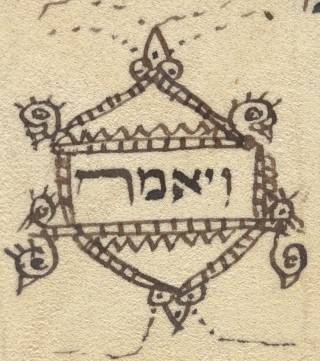
Section from MS Mocatta/27. Reproduced with kind permission from UCL Special Collections, UCL Archives, London.
- Romanian
Castles, rivers, lush nature and living traditions are just some of Romania’s treasures. Alongside the language and the culture, Romania is a lesser-known tourist and culture destination gem in Europe.
Did you know that the famous Danube River forms almost the entire southern border of Romania with Bulgaria? Did you know Romanian is a Romance language, similar to Italian, Spanish, French and Portuguese? Did you know the name of the country, Romania, is derived from the Roman invasion of the former territory of Dacia?
Watch the Romanian video and you will learn about all these facts and a lot more!YouTube Widget Placeholderhttps://www.youtube.com/watch?v=6hLxzsuQhcw 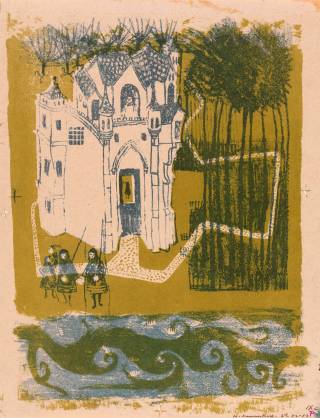
Margaret Summerfield, Castle, colour lithograph on paper, circa 1952 (UCL Art Museum, LDUCS-7387).- Ancient Greek
This language taster is inspired by the collection of mummy labels at The Petrie Museum of Egyptian Archaeology and explains the innovative ways in which they have been used for the teaching of Ancient Greek at UCL. Placed next to Egyptian sarcophagi, the small, wooden labels come in different shapes and provide varied information about the deceased, thereby offering learners an object-based method for examining the ancient language. The video taster also suggests different stages for a potential class and presents the positive feedback of the students together with some resources.
YouTube Widget Placeholderhttps://www.youtube.com/watch?v=Ngw8X0DPjgw&t=16s 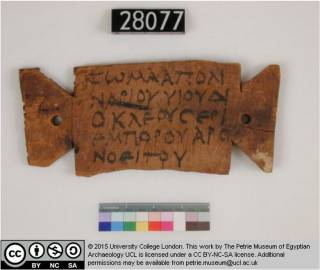
Mummy Label, Tabula Ansata (UCL Petrie Museum, UC28077).
3D image: https://www.ucl.ac.uk/3dpetriemuseum/3dobjects/UC28077.html
- Faroese
Bjarni Steintún, University of the Faroe Island.
In this presentation, you will get a glimpse of Faroese history and culture and how the sea and weather have influenced them. Also, you will learn a few Faroese words and phrases and a few things about Faroese grammar.
The Faroe Islands were settled by Vikings from Norway who sought their fortune on the sea. All through our history the livelihood of the Faroe Islanders has been more or less connected to the sea. In the old days, the sea was also the source of much sorrow and destress, as shipwrecks and accidents at sea were quite common, whereas today, the sea has become a source of great economic growth in the Faroes.
YouTube Widget Placeholderhttps://youtu.be/AEDUwO5BoFM 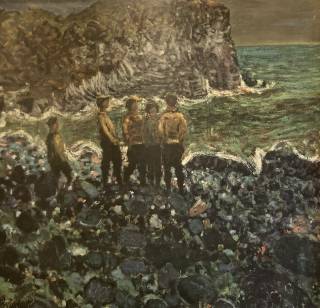
Painting by the Faroese painter Thomas Arge (UCL)
 Close
Close

